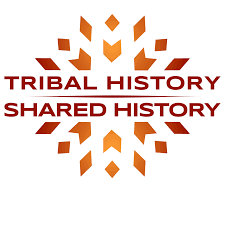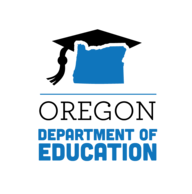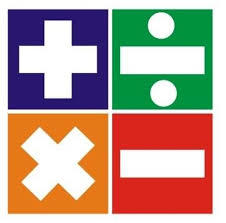|
Highlights this issue include a spotlight on the Teacher Clarity work being done in the Gresham-Barlow School District, our continued Formative Assessment Practices series, a Math in Real Life project update, as well as an update on our Math Standards Review process.
The math content panel is continuing their review of grade level content standards and will have a goal of having a first draft for internal review in January 2020. Feedback will be collected by panelist in February and brought to an in-person co-chair meeting in March. Work from this meeting will be used to create a public working draft which will be the version used to gather feedback.
Here is a link to the overall timeline of the work that has been shared with the content panel and as we reach out to ESDs and STEM Hubs to plan events.
Plan Ahead - Public Draft window from April-July 2020
Please plan ahead to review and engage in the K-12 revision process in the April to July 2020 time frame. Look for announcement of public events in your region soon, and also opportunities to provide individual and group feedback. Please contact Mark Freed, ODE Math Education Specialist, at mark.freed@state.or.us for updates or questions at anytime.
John Hattie’s review of research (2009, 2012) has identified Teacher Clarity as having a great impact on increasing student learning. Teacher Clarity includes deconstructing standards, mapping out learning progressions, creating daily learning targets (the “what”), connecting to students in relevant ways (the “why”), and specifying success criteria (the “how”).
Districts and schools have been deconstructing and mapping for years, and often this work doesn’t go beyond Google Docs, curriculum maps, and “Learning Target” boxes on whiteboards. Professional Learning Teams in the Gresham-Barlow School District have been busy making sure that this work transfers to students! With the facilitation of Doug Fisher and Nancy Frey (authors of The Teacher Clarity Playbook), leaders and instructional coaches have been learning how to guide and sustain the work of instructional clarity as they build an equitable and student-centered culture |
|
 |
 |
|
Principals and school leaders have been tasked with asking five students each day the questions:
- “What are you learning?”
- “Why are you learning it?” and
- “How will you know when you’ve learned it?”
What can we take away from the work in GBSD? “It is vitally important to weave clarity work throughout other district initiatives so it is a part of everything that you do (PLTs, data studies, equity, etc…). As you focus on clarity, student voice is a must. Ask students if they know “What they are learning?”, “Why they are learning it?”, and “How they will know they have been successful in learning it?”; take data; share it with your [team].” What is one idea from this work that you could implement in your own PLT in 2020?
Get the full story, including examples and pictures, at: http://bit.ly/38TR9IT
|

In November, we kicked off a series on formative practices, which make up the most valuable assessment we can do as educators. All of our classroom work rests on building and sustaining a collaborative culture for learning, and much of the power of this collaborative culture is in our Professional Learning Teams (PLTs). As you read about the work Gresham-Barlow School District is doing around teacher clarity, it’s easy to see the potential impact on learning when our students know what is expected of them, why it’s expected, and how they’ll show their success.
In November, we kicked off a series on formative practices, which make up the most valuable assessment we can do as educators. All of our classroom work rests on building and sustaining a collaborative culture for learning, and much of the power of this collaborative culture is in our Professional Learning Teams (PLTs). As you read about the work Gresham-Barlow School District is doing around teacher clarity, it’s easy to see the potential impact on learning when our students know what is expected of them, why it’s expected, and how they’ll show their success.
When I (Andy) started teaching, I had to write a learning target on my whiteboard for every lesson; in fact, it had to be in the upper left corner of my whiteboard, in an area taped off which blue painter’s tape. While this was certainly well-meaning, the purpose of this learning target was not for my students. It wasn’t even for me. It was for my administrators. Educators have long been steeped in learning goals, which are vital in the process of formative assessment because they provide the target students are aiming for. Learning goals are maximized -- and most effective -- when they are accompanied by success criteria, which serve as explicit evidence statements for students as they stay at the center of the learning process. Whether you use success criteria as checkboxes, categories of a rubric, or “I can…” statements, they further support the formative assessment process by making student thinking visible, helping us create the questions we need to stimulate our students’ thinking, and provide appropriate and targeted feedback.
As we enter a new calendar year, reflect on how your PLT uses both learning goals and success criteria. Send us your stories and pictures for a future issue!
|
 |
|
Over the last four years, the Math in Real Life (MiRL) project helped teachers across the state explore what it means to apply mathematics. The six regional MiRL sites worked with teachers to identify mathematically rich contexts and develop lessons that allowed students to explore those applications. One regional project involving Lane ESD and the Lane County STEM Hub linked math teachers to Career and Technical Education (CTE) teachers and local businesses to identify possible applications. |
Two teachers at Thurston Middle School used stretch fabric as an inspiration for an applied lesson on ratios. A local business produces stretch fabric installations such as awnings and backdrops. The business develops patterns based on a stretch ratio to assure that all fabric pieces are sized properly for installation. In the lesson, students explore the mathematics of the stretch ratio and use their understanding to create a scaled awning with multiple geometric shapes. Lane County Mathways has numerous examples of lessons developed by local teachers as well as other useful resources on mathematics education.
For more information on the MiRL project, visit the Oregon Math Project web page at the Oregon Department of Education.
Andy has been supporting district leaders and educators in building assessment literacy, utilizing summative target data, and training on Essential Skills. He has led workshops in Sweet Home School District, Lebanon School District, Southern Oregon ESD, Lincoln County School District, and Linn Benton Lincoln ESD, and visited with teachers at Stayton High School and Spencer Butte Middle School in Eugene. January outings include workshops in Oregon Trail and David Douglas School Districts.
Mark presented to high school counselors at Multnomah ESD on December 10. Link to MESD presentation file that was shared at this event.
 |
|
Mark was able to attend the Train the trained event for the Senate Bill 13: Tribal History/Shared History lessons. Link to the presentation file for this event.
Lessons will be available in grades 4th, 8th, and 10th in the following content areas: English Language Arts, Math, Science, Social Studies, and PE/Health.
Future training events and more information on the Tribral History/Shared history lessons can be found on the ODE website with this link.
|

2019 - 2020 Oregon Summative Assessment Item Writing Development (ELA 3rd - HS & Math 6th - 8th) The Oregon Department of Education (ODE) is seeking educators interested in participating as item writers for the Oregon Summative Assessments in ELA and Mathematics. This commitment would include time for both onsite training and item review, as well as time for the independent development of items. Please complete the following application and submit by no later than Thursday, February 6, 2020. ODE will notify successful applicants for both ELA and math by Monday, February 10, 2020, of their inclusion in the project, along with information on the next steps.
For further information please refer to the complete recruitment letter, or contact Tony Bertrand, Language Arts Assessment Specialist, tony.bertrand@state.or.us or Andrew Byerley, Mathematics Assessment Specialist, andrew.byerley@state.or.us.
|

Perennial Math
You are invited to send unlimited teams to the Perennial Math Tournament at Molalla High School on April 11, 2020. The tournament has three separate levels for grades 3-8. The registration deadline is March 28th to make sure we have time to put the order in for T-shirts.
Registration must be done online on the tournaments page at www.perennialmath.com. More information about the 2020 competition can be found with the link to this flyer.
|

New Materials from the Oregon Council on Economic Education:
Income Inequality:
In October, one of our Board members made a presentation on “Income inequality in America”. This may be a something you might want to include in your classes when discussing the Holocaust. It is documented in history that as there is greater disparity in income in a society, democracy seems to suffer. His powerpoint presentation may be found here; https://www.econoregon.org/resources/
Additional Resources from can be found in link the OCEE December 2020 announcement which includes:
- Supply and Demand
- Econ Challenge
- Stock Market Game
- PDUs from OCEE
|

Elevating Mathematics Video Competition
The mathematical sciences are part of everyday life. Modern communication, transportation, science, engineering, technology, medicine, manufacturing, security, finance, and many other disciplines depend on the mathematical sciences, even if we don’t always realize it. It is important for mathematical researchers to convey the importance of their work to diverse audiences. This often comes down to being able to quickly and simply describe what you are doing and why.
With that in mind, the National Academies’ Board on Mathematical Sciences and Analytics (BMSA) invites early career professionals and students who use mathematics in their work to submit short video “elevator speeches” describing how their work in mathematics is important and relevant to our everyday lives. This can be an unedited selfie video, an animation, or any other format. We just want to learn about why your work is important in 1-2 minutes.
The winning video will be announced and played during the Joint Mathematics Meetings 2020 in Denver, CO. The winning participant will receive the $1000 Oden-Beder Prize and be featured on our website. You do not need to attend the conference to participate.
#ElevatingMath
|
2015 PISA Results Released
Results of the Program for International Student Assessment -- an exam of 15-year-olds from 79 countries in reading, math and science -- released today show China and Singapore ranked first and second, respectively, in all three subjects. Students in the US continue to lag behind their international peers, and scores remained largely unchanged since 2015.
Education Week (tiered subscription model) (12/3), The Washington Post (tiered subscription model) (12/3), U.S. News & World Report (12/3), Quartz (tiered subscription model) (12/3)
Report Presents 2019 Mathematics and Reading Results for Fourth- and Eighth-Grade Students
On October 30, 2019, the National Center for Education Statistics (NCES) released The Nation’s Report Card: 2019 Mathematics and Reading for Grade 4 and 8 (NCES 2020-012). In 2019, NCES administered mathematics and reading assessments to representative samples of fourth- and eighth-grade students in the nation, states, the District of Columbia, Department of Defense schools, and 27 participating large urban districts. Mathematics and reading results from the National Assessment of Educational Progress (NAEP) at grades 4 and 8 are presented in interactive web reports, showing student performance trends from the early 1990s to 2019.
In 2019, average mathematics scores for the nation were 1 point higher at grade 4 and 1 point lower at grade 8 than in 2017. Looking at state/jurisdiction performance in 2019, average mathematics scores at grade 4 were higher in nine states/jurisdictions and lower in three states compared to 2017.
To view the full report, please visit https://nationsreportcard.gov/
Photo Credits
|